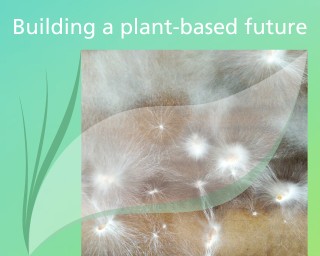Fall is the peak season for mushroom fans, as the moister conditions and falling temperatures are ideal for promoting the growth of fungi. However, when Dr. Henrik-Alexander Christ and Dr. Steffen Sydow from the Fraunhofer WKI set out in search of fungi, they are not only interested in the fruiting body: For the researchers, the thread-like network of hyphae, the so-called mycelium, is particularly exciting. It is found under the soil and its abilities can be exploited for the production of various materials. The two researchers are investigating the potential of mycelium-based materials for use in, for example, the construction industry.
more infoPress | Media
-
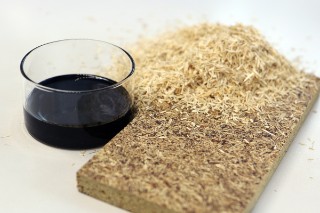
The search for sustainable materials is gaining increasingly in importance – including in the construction and furniture industries. In order to meet this demand, researchers at the Fraunhofer WKI are developing bio-based adhesives on the basis of renewable raw materials and biogenic residues. In the “LowEPanel” research project, they are testing formaldehyde-free adhesives made from lignin and hydroxymethylfurfural (HMF) for the production of sustainable particle boards using regional wood residues. This enables them to develop high-quality bio-based materials, thereby optimizing the value chain. Bio-based adhesives are a key technology for the bonding of materials and the conservation of finite resources, and represent a promising growth market. As a result of the research being conducted at the Fraunhofer WKI, particle boards are becoming more ecological and easier to recycle.
more info -
Making road resurfacing sustainable and cost-effective / 2025
Bio-Based fabric with integrated sensors continuously monitors asphalt road conditions
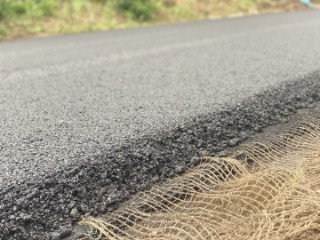
Right now, the only factor determining when a road needs resurfacing is the condition of the road surface itself. However, the state of the asphalt layer beneath it is also an important marker that has not been adequately taken into account until now. To assess it, only indirect measurement methods are available, which either measure only the surface or damage the road by drilling. A new monitoring system from Fraunhofer researchers and partners detects damage early on and continuously monitors the condition of the underlying asphalt layer, comprehensively and without causing any damage. The centerpiece of the new solution is a fabric of sensors inside the asphalt. AI algorithms to analyze the data are also part of the system. Going forward, the researchers hope the interaction between the sensors and AI will help assess the condition of road structures in real time.
more info -
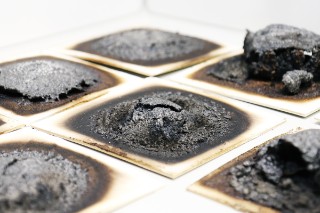
Wood is constantly gaining in importance as a natural and sustainable construction material for buildings. As yet, however, no satisfactory fire-protection solution exists for wood in exterior applications. A lack of flame retardancy is an exclusion criterion for wooden components in tall or large-scale buildings, unless an expensive and time-consuming approval is applied for in individual cases. In collaboration with project partner German Textile Research Center North-West (DTNW), researchers at the Fraunhofer WKI have developed an environmentally-friendly flame-retardant coating for wood surfaces which are exposed to the elements.
more info -
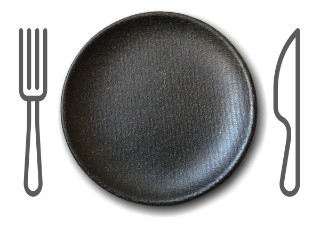
To protect the environment, especially the ocean, many single-use plastic products are banned in the EU. But single-use products made from unmodified natural polymers are allowed. With this in mind, researchers at the Fraunhofer WKI have teamed up with partners to develop compostable single-use tableware based on local agricultural residue from sugar production.
more info -
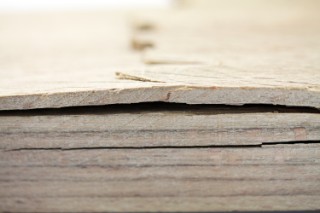
Whether in buildings or vehicles, many load-bearing components can now be made from wood, in particular from bonded wood-based materials and hybrid materials. Their aging behavior, however, has not yet been sufficiently researched. Common methods for testing the durability in outdoor areas are either time-consuming or, as a result of their requirements, not relevant in practice. Both can lead to considerable cost increases for manufacturers and customers. In collaboration with the Department of Separating and Joining Manufacturing Processes (TFF) at the University of Kassel, researchers at the Fraunhofer WKI have therefore developed a realistic rapid-aging procedure that can be used, in particular, by small and medium-sized enterprises (SMEs).
more info -
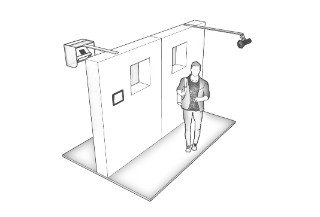
At LIGNA 2025, researchers from the Fraunhofer WKI will be presenting a new type of curtain-wall element as a sustainable solution for the renovation and modernization of buildings. Not only durable raw materials such as robinia wood are thereby utilized: Less durable wood species such as spruce, poplar and kiri have also been optimized using bio-based coatings. As a result, the entire application spectrum of wood-based materials for building façades is thereby showcased. The exhibit can be seen at LIGNA 2025, Hall 26, Stand B78 from the 26th to the 30th of May 2025 in Hanover.
more info -
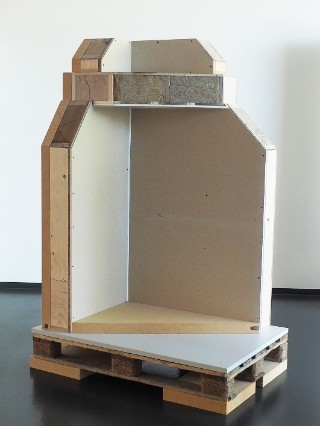
At LIGNA 2025, the Fraunhofer WKI and the Institute of Building Construction and Timber Structures from the Technische Universität Braunschweig will be presenting groundbreaking approaches for a resource-conserving and climate-friendly construction industry. The trade-fair presentation in Hall 11, Stand F85, will showcase activities in research and teaching revolving around the topic of building with wood and other renewable raw materials: from natural-fiber insulation materials, through timber-concrete composite systems, and on to recycling management.
more info -
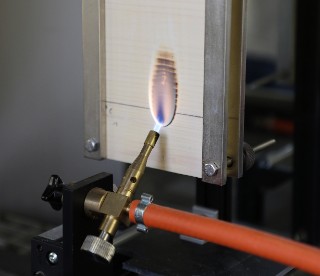
At LIGNA 2025, researchers from the Fraunhofer WKI will be demonstrating that bio-based flame-retardant coatings can provide durable fire protection for wooden furniture. A honeycomb-shaped shelf unit with the novel flame-retardant coating, as well as other exhibits, can be seen at LIGNA 2025, Hall 26, Stand B78 from the 26th to the 30th of May 2025 in Hanover.
more info -
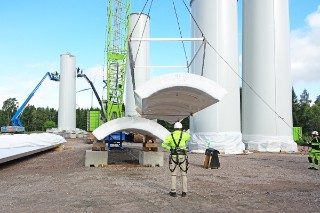
The Fraunhofer WKI is developing innovative solutions for increasing recyclability in the wind-energy sector. By taking the recyclability of rotor blades into account during their construction process, the researchers are ensuring sustainability in the material cycle. Through their expertise in the bonding of wood and hybrid components, researchers at the Fraunhofer WKI have furthermore enabled the construction of what is currently the tallest wooden tower for commercial wind turbines. The Fraunhofer WKI will be showcasing its expertise at LIGNA 2025, Hall 26, Stand B78, with an exhibit featuring the wooden wind-turbine tower, a rotor blade, and recycled products made from rotor blades.
more info
 Fraunhofer Institute for Wood Research
Fraunhofer Institute for Wood Research 